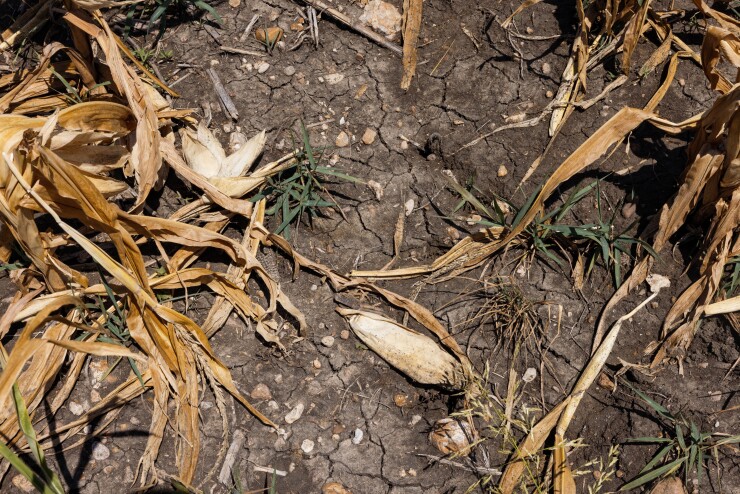(Bloomberg) --When a hurricane or a wildfire strikes, the economic damage is usually very visible — roofs are ripped off or charred homes line roads. Heat waves cause financial damage, too, but it's more diffuse: Farm crops might wither, construction workers pause or data centers
Climate risk models, which are widely used in the insurance industry, can estimate the likelihood that fires or floods will affect a specific place in the US, even down to the address level, and how much damage that would wreak. So far, the models don't typically make detailed projections for extreme heat. For one thing, heat is less of a threat to real estate than it is to health, energy infrastructure and the food supply.
But cities, businesses and insurers need the financial risks to be outlined more clearly, and some believe a new market for heat insurance — driven in part by artificial intelligence and the need to cool data centers — is around the corner.
Read more:
Hedging against heat
The property information firm Cotality, previously known as CoreLogic, recently started offering heat-hazard modeling on its widely used risk-analysis platform. And Mercer, a unit of Marsh & McLennan Cos Inc., in May launched a climate health cost
"The health cost is but one of many," said Tracy Watts, Mercer's US leader for healthcare policy. "You've got increased workers' compensation cost, disability issues, life insurance, absentee issues."
These newer tools follow the emergence of hedging instruments like weather derivatives, forward contracts and
"I think when we look more closely at extreme heat," said Garrett Bradford, a principal at Milliman Inc., an actuarial and management consulting firm, "we will find the risk often isn't taken sufficiently into account" in insurance, "and the downside of a major heat event is potentially significant."
Read more:
Last year was
As doctors and public officials tackle the rise in dangerous health effects, there are early efforts to assess heat's financial toll. In California alone, the state found in a
'Bespoke' predictions
One challenge for predicting a heat wave's impacts, says Anand Srinivasan, a Cotality executive who develops climate change-related products, is that heat damage is relatively complex to model. Many different variables determine its impact. For starters: How long does the heat wave last? Is it dry or wet heat? Does it
As of last year, Cotality models not just "acute" perils like wildfires and floods but also "chronic" ones: extreme heat, drought, cold waves and extreme precipitation. The first edition of its chronic-peril modeling tool offers risk indices for heat down to an address level, but doesn't estimate the monetary impact of a heat event.
"What we can do is provide the analytics and data for people," says Srinivasan. "That way, a typical [company] risk manager would say, 'Okay, do I keep my office open during this heat wave? What kind of extra support do I need to provide to my personnel?'"
Srinivasan says he expects modeling of heat waves' financial consequences, industry by industry, will follow eventually.
The data firm
Wildfire and hurricane models have been "commoditized" to a certain extent, he said, but heat prediction is still "bespoke" since it is industry-specific as much as place-based.
In the past, insurance companies have sometimes perceived changes in climate risk too late and ended up paying out dearly after outsized events. Two examples are Hurricane Andrew in Florida in 1992 and Northern California's Camp Fire in 2018. In both cases, insurers sustained losses far outside the expected parameters; each disaster led to investments in far more accurate modeling of hurricanes and wildfires, respectively (and then in higher premiums for customers).
The technology to run a full hazard analysis on heat for any industry or city is there, says Cole Mayer, who runs parametric products for Aon Plc, a risk management firm. But clients' appetite to pay for more insurance is still limited. "There's a risk perception evolution that needs to happen," says Mayer.
AI and crypto, with their dependence on heat-sensitive data centers, may propel the growth of the market, he adds: "These are exposures that didn't exist to the same extent 10 years ago."
Dave Bigelow, a climate risk advisor for Aon, thinks time alone will do it. "We've got hundreds of years of records of floods and hurricanes and acute perils," he notes. "But for heat, we're just starting to see it" in the data.
To contact the author of this story:
Leslie Kaufman in New York at






